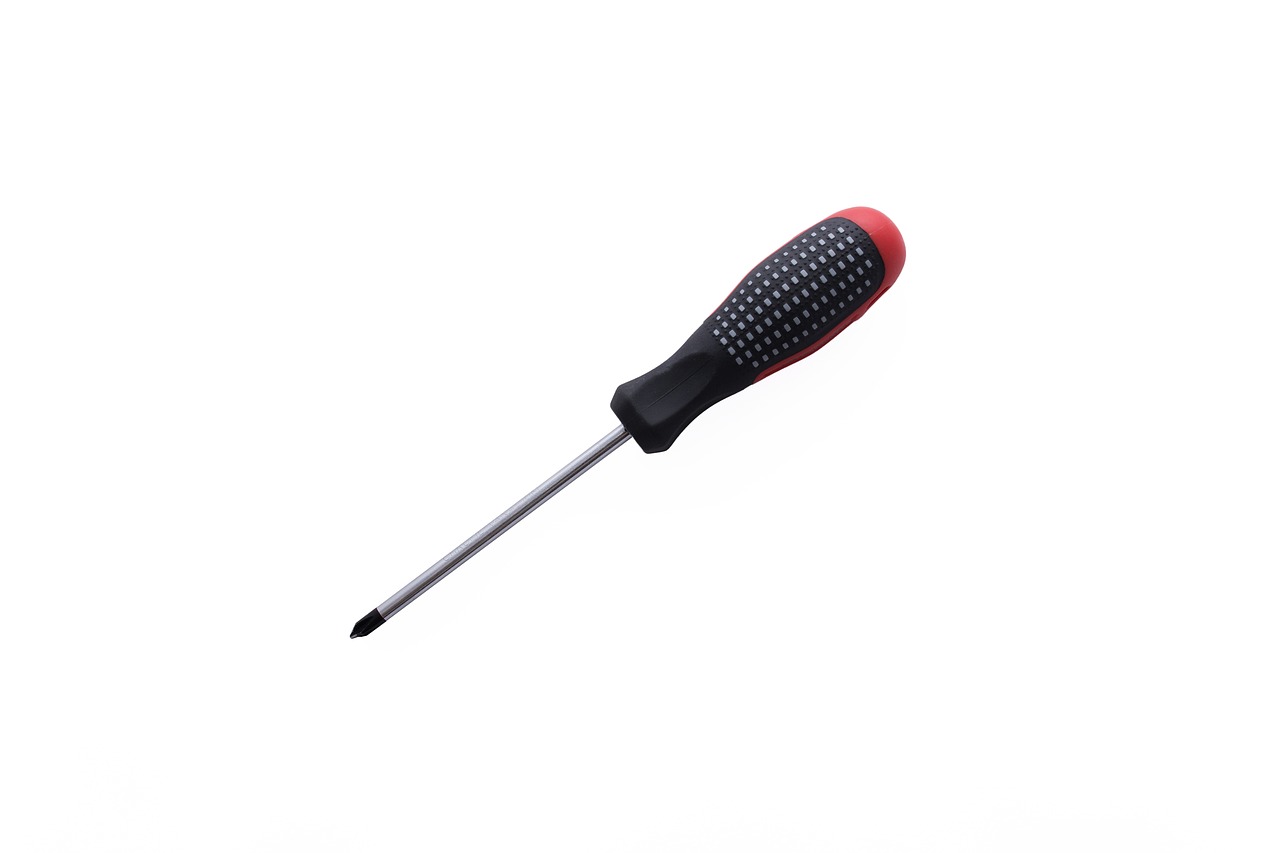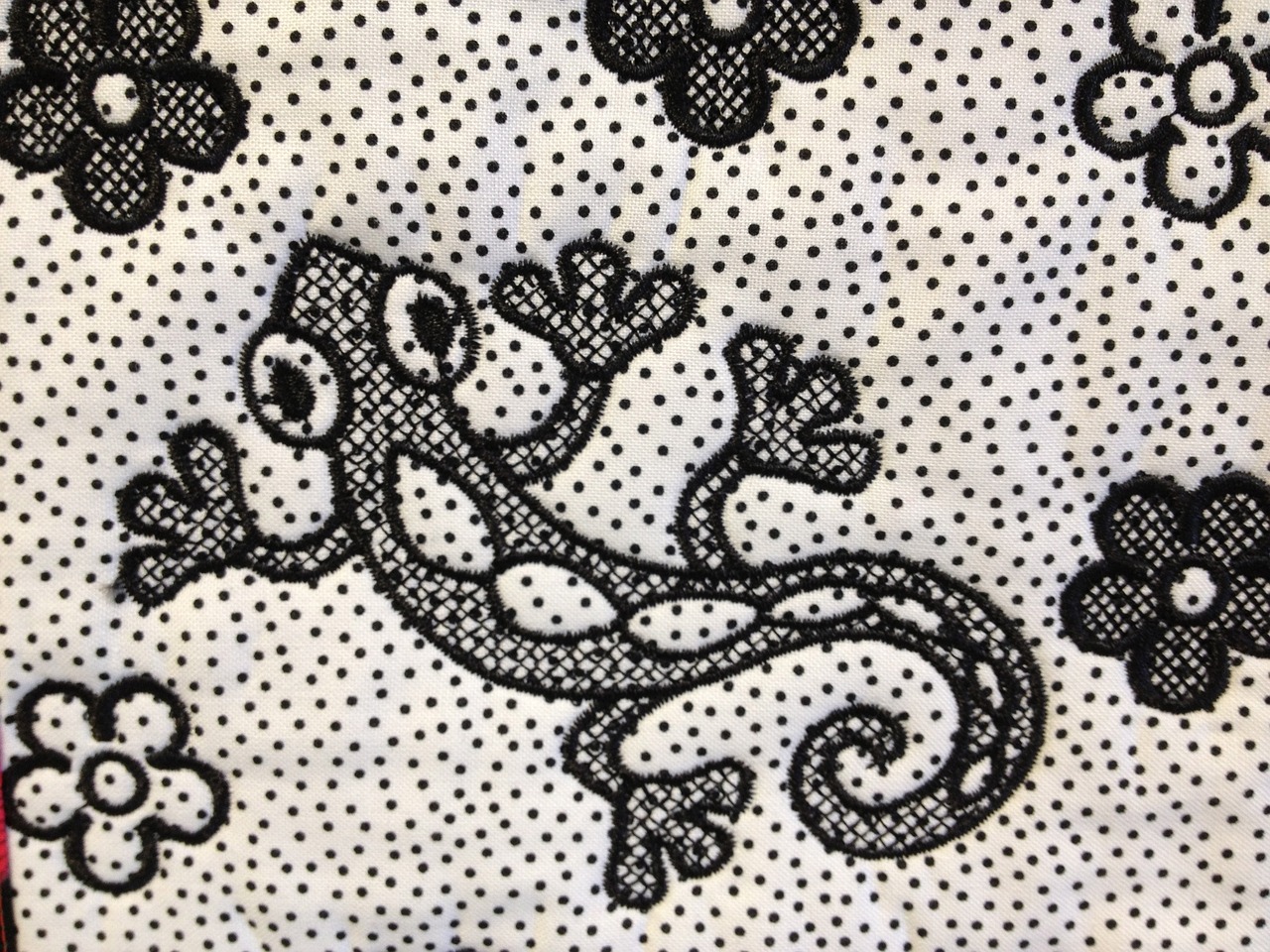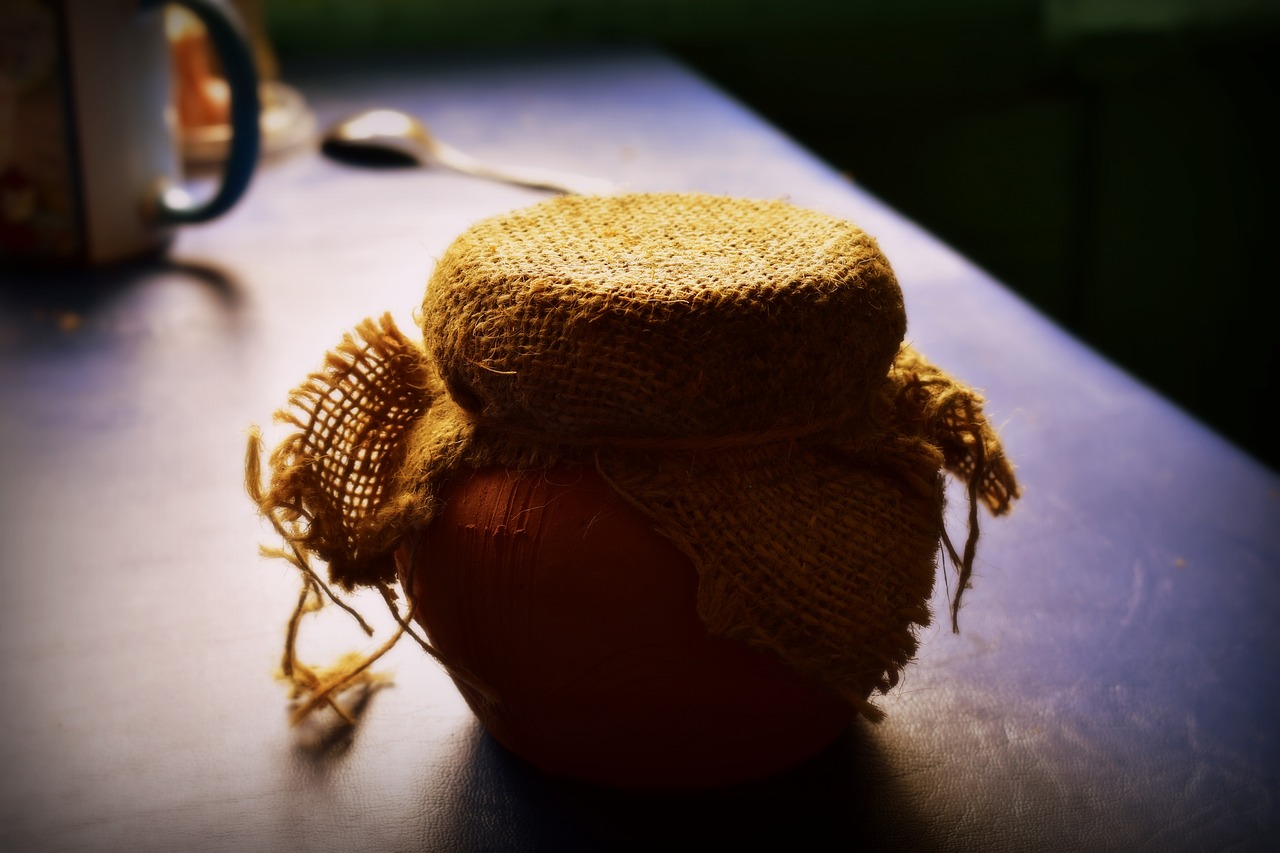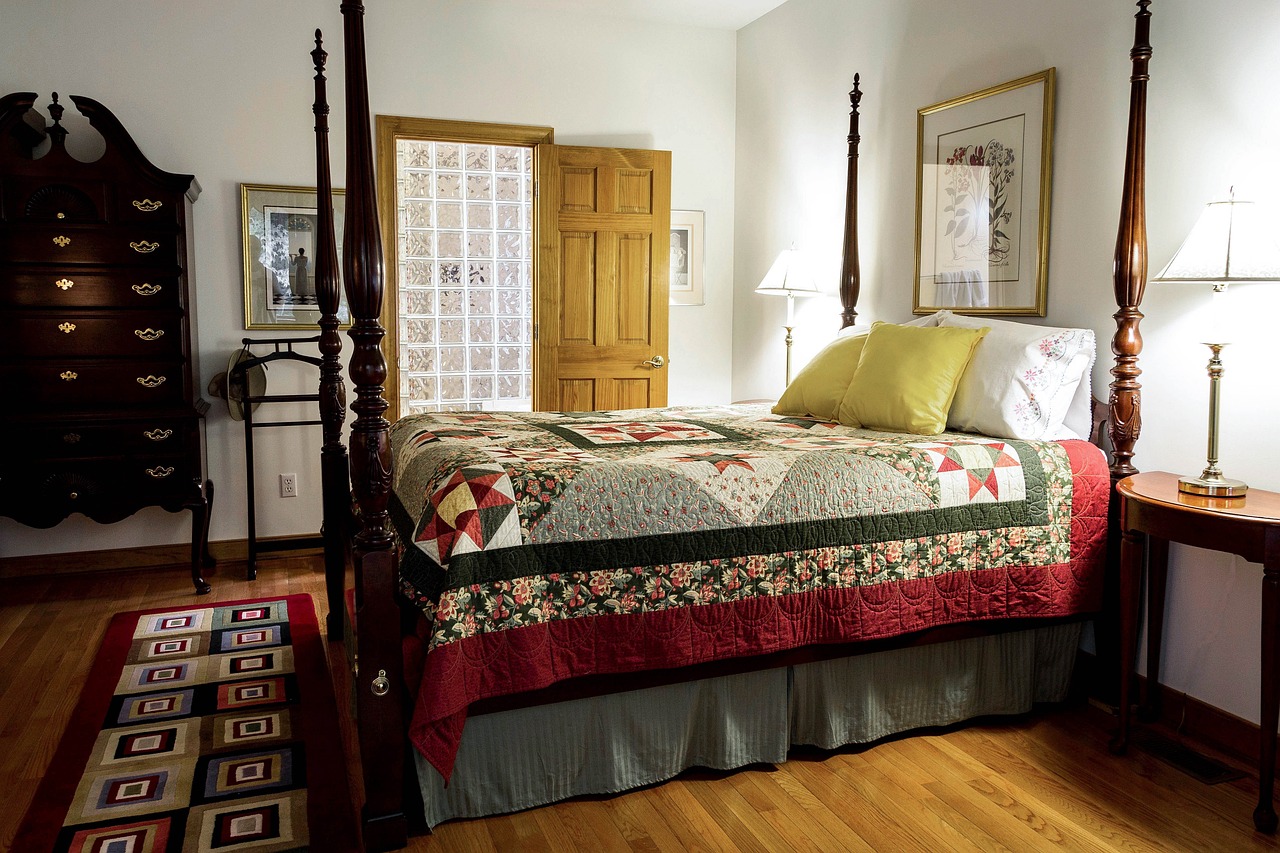Top Quilting Innovations That Changed the Hobby
Quilting has long been a beloved craft, steeped in tradition and creativity. However, over the years, innovations have emerged that have transformed this age-old hobby into something even more exciting and accessible. These advancements not only enhance the quilting experience but also invite a new wave of enthusiasts to join the ranks of quilters worldwide. From cutting-edge tools to groundbreaking techniques, let's explore how these innovations have changed the face of quilting forever.
The introduction of rotary cutters was nothing short of revolutionary for quilters. Prior to this tool, fabric was cut using scissors, which could be tedious and often led to uneven edges. With rotary cutters, quilters can now cut through multiple layers of fabric with precision and speed. Imagine being able to slice through fabric like a hot knife through butter! This innovation has made it possible to create intricate designs that would have been nearly impossible to achieve with traditional methods. The clean edges produced by rotary cutters not only save time but also enhance the overall quality of the finished quilt.
Another game-changer in the quilting world is the advent of machine quilting. Gone are the days when completing a quilt could take months of hand-stitching. With various machine quilting methods, quilters can now finish their projects in a fraction of the time. This shift has opened the door to more complex patterns and designs, allowing quilters to express their creativity in ways they never thought possible. From simple straight-line quilting to elaborate free-motion designs, the possibilities are endless. The impact of machine quilting on the quilting community cannot be overstated; it has made quilting more enjoyable and less time-consuming, encouraging more people to take up the craft.
Among the most impressive advancements in machine quilting are longarm quilting machines. These specialized machines are designed to handle larger quilts with ease, allowing quilters to work on projects that were once too cumbersome to manage. Longarm machines come equipped with a variety of advanced features, such as adjustable frames and computerized stitching options. This technology not only increases efficiency but also enhances creativity, as quilters can experiment with larger designs and patterns. Whether you’re a hobbyist or a professional, longarm quilting machines have undoubtedly elevated the quilting experience.
In the realm of technology, computerized quilting systems stand out for their ability to provide precision and consistency in stitching patterns. These systems allow quilters to automate their designs, making it easier than ever to replicate intricate motifs. Imagine being able to create professional-quality results right from the comfort of your home! With computerized systems, quilters can focus on their creative vision rather than getting bogged down by the technical aspects of stitching. This innovation has made it possible for even novice quilters to achieve stunning results.
One of the most time-saving techniques in machine quilting is edge-to-edge quilting. This method allows quilters to cover the entire quilt with one continuous design, simplifying the quilting process significantly. Instead of working on individual blocks, quilters can now focus on creating a cohesive look that enhances the overall appearance of the finished product. This technique not only saves time but also ensures that the quilt has a uniform design, making it visually appealing and professionally finished.
If you’re looking for a way to unleash your creativity, free-motion quilting is the answer. This technique allows quilters to create unique designs without the constraints of a sewing machine’s feed dogs. It’s like having a blank canvas where you can let your imagination run wild! Free-motion quilting encourages personal expression, enabling quilters to craft custom patterns that reflect their individual style. Whether you’re doodling flowers or swirling designs, this technique offers endless possibilities for creativity and artistic expression.
The world of quilting has also been transformed by the development of innovative fabrics and materials. New textiles have expanded the possibilities for quilt designs, allowing quilters to experiment with different textures, colors, and patterns. For instance, the introduction of eco-friendly fabrics has allowed quilters to create beautiful projects while also being mindful of the environment. With a growing emphasis on sustainability, many quilters are now opting for organic and recycled materials, making their crafting practices more environmentally conscious.
Eco-friendly fabrics have gained traction among quilters who prioritize sustainability. By using organic cotton or recycled materials, quilters can reduce their environmental footprint while still producing stunning quilts. This shift towards sustainability not only benefits the planet but also resonates with a growing community of quilters who value ethical crafting practices. It’s a win-win situation that allows quilters to enjoy their hobby while making a positive impact.
Performance fabrics are another exciting innovation that has changed quilt functionality. These materials are designed for durability and ease of care, allowing quilters to create projects that can withstand everyday use. Imagine a quilt that not only looks beautiful but can also hold up to the rigors of daily life! This advancement has made quilting more practical, encouraging quilters to create items that can be enjoyed for years to come.
The rise of online quilting communities has connected quilters around the globe, fostering collaboration and the sharing of ideas. Social media platforms and forums have enriched the quilting experience, providing support, inspiration, and a sense of belonging. Whether you’re seeking advice on a tricky pattern or want to showcase your latest creation, these online spaces have become vital resources for quilters of all skill levels.
With the advent of technology, virtual workshops and tutorials have made quilting education more accessible than ever. Online platforms offer valuable resources for quilters, allowing them to enhance their skills and knowledge through interactive learning experiences. Whether you’re a beginner looking to learn the basics or an experienced quilter seeking new techniques, these virtual resources provide a wealth of information at your fingertips.
Social media platforms have revolutionized how quilters showcase their work and connect with others. Platforms like Instagram and Pinterest have become essential tools for quilters, allowing them to share their creations and gain inspiration from fellow crafters. The influence of social media on quilting trends and community engagement is profound, creating a vibrant and supportive network of quilters worldwide.
Q: What is the best tool for cutting fabric?
A: The rotary cutter is widely regarded as the best tool for cutting fabric due to its precision and ability to cut multiple layers at once.
Q: How has machine quilting changed the hobby?
A: Machine quilting has drastically reduced the time it takes to complete quilts, allowing for more complex designs and encouraging more people to take up quilting.
Q: What are eco-friendly fabrics?
A: Eco-friendly fabrics are materials made from organic or recycled sources, promoting sustainability within the quilting community.
Q: How can I connect with other quilters online?
A: Joining social media platforms like Instagram, Facebook groups, or quilting forums can help you connect with fellow quilters and share your work.

The Advent of Rotary Cutters
The introduction of rotary cutters has been nothing short of a game-changer in the quilting world. Before their advent, quilters relied heavily on traditional scissors, which, while effective, often led to uneven edges and a lot of wasted fabric. With rotary cutters, cutting fabric became a breeze! Imagine slicing through layers of fabric like a hot knife through butter. This tool not only enhances precision but also significantly speeds up the cutting process, allowing quilters to focus more on their creativity rather than the tedious task of cutting.
Rotary cutters come in various sizes and styles, catering to different needs and preferences. The most common size is the 45mm blade, which is perfect for most quilting projects. However, for those intricate designs that require more finesse, smaller blades (like the 28mm) are available. On the flip side, larger blades (like the 60mm) can handle multiple layers of fabric at once, making them ideal for larger quilts. Here’s a quick overview of the different rotary cutter sizes:
| Blade Size (mm) | Best For |
|---|---|
| 28 | Intricate cuts and small pieces |
| 45 | Most quilting projects |
| 60 | Multiple layers and large quilts |
One of the best features of rotary cutters is the safety mechanism. Most models come with a blade guard that retracts when pressure is applied, making it safer for both experienced quilters and newcomers. This innovation has made rotary cutters not only a tool for efficiency but also a safer option for all skill levels. Additionally, the ability to cut straight lines and curves with precision has opened up a world of possibilities for quilt designs. No longer do quilters have to compromise on their artistic vision due to the limitations of their cutting tools.
Moreover, rotary cutters have paved the way for more complex quilting techniques. For instance, the ability to cut intricate shapes and patterns allows quilters to experiment with appliqué and piecing techniques, which can elevate their projects to new heights. This transformation has encouraged a new generation of quilters to push the boundaries of creativity, making quilting not just a hobby but an art form. Just think about it: with a rotary cutter in hand, the possibilities are endless!
In conclusion, the advent of rotary cutters has significantly transformed the quilting landscape. They have made the craft more accessible and enjoyable, allowing quilters to focus on what they love most: creating beautiful quilts. Whether you're a seasoned pro or just starting, a rotary cutter is an essential tool that can elevate your quilting game to the next level. So, if you haven't yet embraced this innovation, it might be time to give it a try!
- What is a rotary cutter? A rotary cutter is a tool used in quilting and sewing that features a circular blade for cutting fabric with precision.
- How do I maintain my rotary cutter? Regularly replace the blade when it becomes dull, and clean the cutter to ensure smooth operation.
- Can rotary cutters cut through multiple layers of fabric? Yes, larger rotary cutters can easily cut through several layers at once, making them ideal for large quilting projects.

Machine Quilting Techniques
The world of quilting has been forever changed by the introduction of . Gone are the days when quilters spent countless hours stitching by hand, painstakingly crafting each square and seam. With the advent of these techniques, the quilting process has become not only faster but also more intricate and creative. Imagine being able to produce a beautiful quilt in a fraction of the time it once took, all while exploring complex patterns that were previously deemed too challenging. Sounds like a dream, right? Well, it's a reality for modern quilters!
There are several methods of machine quilting that cater to different skill levels and preferences. For instance, some quilters prefer to use their standard sewing machines, while others invest in specialized quilting machines. Each method has its own unique set of advantages, making it essential for quilters to find the technique that best suits their style. Let’s dive into some of the most popular machine quilting techniques that have made waves in the quilting community:
- Longarm Quilting: This technique utilizes a longarm quilting machine, which allows the quilter to manipulate the fabric freely while the machine does the stitching. This is particularly beneficial for larger quilts, as it provides the ability to cover vast areas quickly and efficiently.
- Free-Motion Quilting: With free-motion quilting, quilters can create stunning designs by moving the fabric in any direction they desire. This technique encourages personal expression and creativity, allowing for unique patterns that reflect the quilter's individual style.
- Walking Foot Quilting: This method involves using a walking foot attachment on a standard sewing machine, which helps to evenly feed the layers of fabric through the machine. It’s perfect for straight-line quilting and is a favorite among beginners.
Each of these techniques has its own learning curve, but the results can be incredibly rewarding. For example, many quilters find that using a longarm machine not only speeds up the process but also enhances the overall quality of their work. The precision offered by these machines allows for intricate designs that would be difficult to achieve with a standard sewing machine.
Furthermore, the impact of machine quilting on the quilting community cannot be overstated. It has opened up a world of possibilities, enabling quilters to tackle more complex projects and experiment with different styles. As a result, we see a vibrant community of quilters who are eager to share their tips, tricks, and creative ideas. Whether you're a seasoned pro or just starting, embracing machine quilting techniques can elevate your quilting game to new heights.
In summary, machine quilting techniques have not only transformed the way we create quilts but have also made the hobby more accessible and enjoyable for everyone. The combination of speed, creativity, and precision has allowed quilters to produce stunning pieces that showcase their skills and individuality. So, if you haven’t yet explored the world of machine quilting, now is the perfect time to dive in and discover the joy it can bring to your quilting journey!
Q: What is the best machine for quilting?
A: The best machine for quilting depends on your needs and budget. Longarm machines are great for large quilts, while a good quality sewing machine with a walking foot can also do the job effectively.
Q: Can I use my regular sewing machine for quilting?
A: Absolutely! Many quilters successfully use standard sewing machines for quilting. Just make sure to have the right accessories, such as a walking foot or free-motion foot, to enhance your quilting experience.
Q: How do I start machine quilting?
A: Start by choosing a simple quilt pattern, gather your materials, and practice on scrap fabric before diving into your main project. Watching tutorials can also be incredibly helpful!

Longarm Quilting Machines
Longarm quilting machines have truly revolutionized the quilting landscape, allowing both hobbyists and professionals to take their creations to new heights. Imagine a machine that not only stitches but also elevates your quilting experience—this is exactly what longarm machines do! They are designed to handle larger quilts with ease, enabling quilters to work on projects that were once daunting due to size constraints. The beauty of these machines lies in their ability to combine precision and efficiency, making quilting a more enjoyable and less labor-intensive process.
One of the standout features of longarm quilting machines is their impressive throat space, which provides ample room for maneuvering large quilts. This means you can quilt a king-size blanket without feeling like you're wrestling with fabric. Additionally, many longarm machines come equipped with advanced features such as adjustable speed settings, programmable stitch patterns, and even computerized systems that can automate intricate designs. This level of technology allows quilters to explore creative possibilities that were previously unimaginable.
Now, you might be wondering: what exactly sets longarm machines apart from traditional quilting methods? Here are a few key differences:
- Speed: Longarm machines can quilt faster than domestic sewing machines, allowing for quicker project completion.
- Precision: The ability to maintain consistent tension and stitch length results in beautifully finished quilts.
- Versatility: With various attachments and features, longarm machines can tackle a wide range of quilting styles, from intricate free-motion designs to simple edge-to-edge patterns.
For those who are considering investing in a longarm quilting machine, it’s essential to weigh the options carefully. Factors such as budget, available space, and personal quilting goals should guide your decision. Many quilters find that the initial investment pays off in the long run, especially as they become more proficient and start tackling larger, more complex projects.
To help you navigate this exciting world of longarm quilting, here’s a quick comparison table of some popular longarm quilting machines:
| Machine Model | Throat Space | Features | Price Range |
|---|---|---|---|
| Handi Quilter Amara | 20 inches | Computerized, Adjustable Speed | $8,000 - $10,000 |
| Bernina Q 24 | 24 inches | Stitch Regulator, Customizable Settings | $12,000 - $15,000 |
| Gammill Statler | 30 inches | Automated Quilting, Touchscreen Interface | $20,000 - $25,000 |
In conclusion, longarm quilting machines are a game-changer for anyone serious about quilting. They not only enhance the quality and efficiency of your projects but also open up a world of creative possibilities. Whether you're a seasoned quilter looking to expand your toolkit or a beginner eager to dive into the craft, investing in a longarm machine could be one of the best decisions you make. So, why not explore this innovative technology and see how it can elevate your quilting journey?
- What is a longarm quilting machine? A longarm quilting machine is a specialized sewing machine designed to quilt larger projects with greater ease and precision compared to traditional sewing machines.
- Do I need special training to use a longarm machine? While some experience with quilting is beneficial, many manufacturers offer training sessions and resources to help you get started.
- Can I use my regular quilting patterns with a longarm machine? Yes! Most longarm machines can accommodate a variety of quilting patterns, whether they are hand-drawn or computerized.

Computerized Quilting Systems
Computerized quilting systems have truly transformed the landscape of quilting, allowing enthusiasts to elevate their craft to new heights. Imagine having the capability to automate intricate designs and replicate them with precision, all at the touch of a button. These systems have become a game-changer for quilters, making it easier than ever to achieve professional-quality results without the painstaking effort traditionally required.
One of the most significant advantages of computerized quilting systems is their ability to provide consistency in stitching patterns. For those who have struggled with maintaining uniformity in their quilting, this technology offers a breath of fresh air. With advanced software, quilters can choose from a vast library of designs or even upload their own, ensuring that each quilt is not only unique but also flawlessly executed. This level of control is akin to having a personal assistant dedicated to your quilting projects, allowing you to focus on creativity rather than the minutiae of technique.
Additionally, many of these systems come equipped with features such as automatic thread cutting and needle positioning, which streamline the quilting process. These enhancements reduce the time spent on each project, enabling quilters to complete more quilts in less time. For busy individuals who juggle multiple responsibilities, this efficiency is invaluable. It's like having a secret weapon in your quilting arsenal, allowing you to produce stunning quilts without sacrificing your precious time.
Furthermore, computerized quilting systems cater to both hobbyists and professional quilters alike. Whether you’re a beginner looking to explore your creative side or an experienced quilter aiming to take on larger, more complex projects, these systems provide the tools necessary to achieve your goals. They empower quilters to experiment with new designs and techniques, pushing the boundaries of what can be accomplished with fabric and thread.
To illustrate the impact of computerized quilting systems, consider the following table that highlights some of their key features:
| Feature | Description |
|---|---|
| Design Library | A vast collection of pre-loaded patterns and designs to choose from. |
| Custom Design Upload | Ability to upload personal designs for a truly unique quilt. |
| Automatic Thread Cutting | Automatically cuts the thread at the end of each seam, saving time. |
| Needle Positioning | Allows for precise needle placement for accurate stitching. |
In conclusion, computerized quilting systems have revolutionized the quilting experience, making it more accessible, efficient, and enjoyable. They allow quilters to unleash their creativity while minimizing the technical challenges that can often accompany the craft. So, whether you’re a seasoned pro or just dipping your toes into the quilting world, embracing this technology could be the key to unlocking your full potential as a quilter.
- What is a computerized quilting system? A computerized quilting system is a machine that uses advanced technology to automate the quilting process, allowing for precise and consistent stitching patterns.
- Are computerized quilting systems suitable for beginners? Yes! Many systems are designed with user-friendly interfaces, making them accessible for quilters of all skill levels.
- Can I use my own designs with a computerized quilting system? Absolutely! Most systems allow you to upload your own designs, giving you the freedom to create unique quilts.
- How much does a computerized quilting system cost? Prices can vary widely based on features and brand, ranging from a few hundred to several thousand dollars.

Edge-to-Edge Quilting
This article explores significant advancements in quilting, highlighting how they have transformed the craft. From tools to techniques, these innovations have made quilting more accessible and enjoyable for enthusiasts of all skill levels.
Rotary cutters revolutionized the way quilters cut fabric, offering precision and speed. This tool has become a staple in quilting, allowing for clean edges and intricate designs that were previously difficult to achieve.
The introduction of machine quilting has significantly reduced the time needed to complete quilts. This section discusses various machine quilting methods and their impact on the quilting community, enabling more complex patterns and faster production.
Longarm quilting machines have transformed the quilting process, allowing for larger quilts to be stitched with ease. These machines offer advanced features that enhance creativity and efficiency, catering to both hobbyists and professional quilters.
Computerized quilting systems provide precision and consistency in stitching patterns. This technology allows quilters to automate designs, making it easier to replicate intricate motifs and achieve professional-quality results.
simplifies the quilting process by allowing quilters to cover the entire quilt in one continuous design. Imagine the satisfaction of seeing your entire quilt come together seamlessly, without the hassle of stopping and starting at various points. This technique not only saves time but also enhances the overall appearance of the finished product.
One of the biggest advantages of edge-to-edge quilting is its ability to provide a uniform look across the quilt. By using a single design that flows from one edge to the other, quilters can create stunning visual effects that draw the eye. Whether you're working with a bold geometric pattern or a delicate floral motif, edge-to-edge quilting ensures that your design is cohesive and polished.
Moreover, this technique is incredibly versatile. It can be applied to various types of quilts, from traditional to modern styles. Many quilters find that edge-to-edge designs allow them to experiment with different motifs, providing an opportunity to showcase their creativity. For instance, a simple stipple pattern can add texture to a quilt, while a more intricate design can serve as a stunning focal point.
In addition to aesthetics, edge-to-edge quilting can significantly speed up the quilting process. Instead of spending hours meticulously stitching around each individual block or element, quilters can complete their projects in a fraction of the time. This efficiency is particularly beneficial for those who create quilts for charitable causes or have multiple projects on the go.
To get started with edge-to-edge quilting, quilters can choose from a variety of designs available in quilting software or purchase pre-made templates. Many longarm quilting machines also come equipped with built-in edge-to-edge patterns, making it easier than ever to dive into this technique. With just a little practice, you'll find that edge-to-edge quilting opens up a world of possibilities for your quilting projects!
The development of new fabrics and materials has expanded the possibilities in quilting. This section examines how advancements in textile technology have influenced quilt designs and functionality, making the hobby more versatile.
Eco-friendly fabrics have gained popularity among quilters who prioritize sustainability. This section discusses the benefits of using organic and recycled materials, promoting environmentally conscious practices within the quilting community.
Performance fabrics, designed for durability and ease of care, have transformed quilt functionality. This innovation allows quilters to create projects that withstand wear and tear, making quilts more practical for everyday use.
The rise of online quilting communities has connected quilters worldwide, fostering collaboration and sharing of ideas. This section explores how social media and forums have enriched the quilting experience, providing support and inspiration.
Virtual workshops and tutorials have made quilting education more accessible. This subheading discusses how online platforms offer valuable resources for quilters of all levels, enhancing skills and knowledge through interactive learning experiences.
Social media platforms have become vital tools for quilters to showcase their work and connect with others. This section highlights the impact of platforms like Instagram and Pinterest on quilting trends and community engagement.
- What is edge-to-edge quilting? Edge-to-edge quilting is a technique that covers the entire quilt with a single continuous design, enhancing the quilt's appearance and saving time.
- Can I use edge-to-edge quilting on any quilt? Yes! Edge-to-edge quilting can be applied to various quilt styles, making it a versatile technique for all quilters.
- Do I need special tools for edge-to-edge quilting? While many longarm machines come with built-in patterns, quilters can also use quilting software or templates to create edge-to-edge designs.

Free-Motion Quilting
Free-motion quilting is like unleashing your inner artist with a sewing machine! Imagine being able to draw with thread, creating intricate designs that are as unique as your personality. Unlike traditional quilting methods that follow a set pattern, free-motion quilting gives you the freedom to explore your creativity. You can zigzag, swirl, and loop your way through fabric, allowing for a truly personal touch in every quilt you make.
One of the most exciting aspects of free-motion quilting is the opportunity for self-expression. Whether you're a beginner or a seasoned quilter, this technique encourages you to experiment with different styles and motifs. You can create anything from simple stippling patterns to elaborate floral designs. The beauty of this method lies in its versatility; you can tailor your designs to match the theme of your quilt or even your mood!
To get started with free-motion quilting, you'll need a few essential tools. First and foremost, a free-motion quilting foot is crucial. This specialized foot allows the needle to move freely in all directions, giving you the control you need to create stunning designs. Additionally, a darning plate or a machine that allows for drop feed dogs is necessary to prevent the fabric from moving in a straight line. With these tools in hand, you're ready to dive into the world of free-motion quilting.
Before you begin, it’s a good idea to practice on scrap fabric. This not only helps you get comfortable with the technique but also allows you to experiment with different patterns without the pressure of ruining a finished quilt. Remember, practice makes perfect! You might find that starting with simple shapes, like loops and swirls, can build your confidence before tackling more complex designs.
As you gain confidence, consider incorporating layering techniques into your free-motion quilting. By using different thread colors and weights, you can add depth and dimension to your designs. For instance, using a thick thread for outlines can create a striking contrast against a finer thread used for shading. This layering effect can transform a simple quilt into a stunning work of art.
Another exciting aspect of free-motion quilting is the ability to create customized quilts that tell a story. Imagine quilting a family tree, where each branch represents a different family member, or creating a quilt that reflects your favorite vacation spots. The possibilities are endless! By incorporating personal elements into your quilting, you create not just a blanket, but a cherished memory.
In conclusion, free-motion quilting is an exhilarating way to express your creativity and make your quilts truly one-of-a-kind. With the right tools, a bit of practice, and a dash of imagination, you can transform simple fabric into a masterpiece that reflects your unique style. So why not give it a try? You might just discover a new passion that adds a whole new dimension to your quilting journey!
- What is free-motion quilting? Free-motion quilting is a technique that allows quilters to move the fabric freely under the needle, enabling them to create unique and intricate designs.
- Do I need special equipment for free-motion quilting? Yes, you will need a free-motion quilting foot and a machine that can drop the feed dogs or has a darning plate.
- Can beginners try free-motion quilting? Absolutely! Beginners can start with simple patterns and practice on scrap fabric to build their skills.
- How can I improve my free-motion quilting skills? Regular practice is key. Consider taking classes or watching online tutorials to learn new techniques and tips.

Innovative Fabrics and Materials
The world of quilting has undergone a remarkable transformation thanks to the introduction of . These advancements have not only expanded the possibilities for quilt designs but have also enhanced the functionality of quilts in our daily lives. Imagine being able to create a quilt that is not only beautiful but also durable and eco-friendly! This is now a reality for quilters everywhere.
One of the most exciting developments in quilting materials is the rise of eco-friendly fabrics. As more quilters become aware of their environmental impact, there has been a significant shift towards using organic and recycled materials. These fabrics are produced without harmful chemicals, making them safer for both the quilter and the planet. For instance, organic cotton is grown without pesticides, which not only benefits the environment but also results in softer, more breathable fabric. Quilters who choose eco-friendly options are not just creating art; they are making a statement about sustainability and responsibility.
Furthermore, performance fabrics have emerged as a game-changer in the quilting industry. These materials are designed for durability and ease of care, allowing quilters to create projects that can withstand the rigors of everyday use. Imagine a quilt that can handle spills, stains, and even the occasional tug from a playful pet! Performance fabrics are often treated to resist water and stains, making them ideal for quilts that will be used in high-traffic areas or by families with young children. This innovation means that quilters can now focus on creativity without sacrificing practicality.
As we explore these innovative fabrics, it’s essential to consider how they influence the overall quilt design. For example, the mix of traditional quilting techniques with modern materials can lead to stunning results. Quilters can experiment with textures, colors, and patterns that were once impossible. The versatility of these fabrics allows for the creation of quilts that are not only functional but also serve as striking decor in any home.
| Fabric Type | Features | Benefits |
|---|---|---|
| Eco-Friendly Fabrics | Organic, recycled | Safer for the environment, softer feel |
| Performance Fabrics | Water-resistant, stain-resistant | Durable, easy to clean |
In conclusion, the innovations in fabrics and materials have opened up a world of possibilities for quilters. Whether you choose eco-friendly options to support sustainability or performance fabrics for their practicality, these advancements allow for greater creativity and functionality. As the quilting community continues to evolve, embracing these materials will undoubtedly lead to even more exciting developments in the craft.
- What are eco-friendly fabrics? Eco-friendly fabrics are materials made from organic or recycled sources, produced without harmful chemicals.
- How do performance fabrics benefit quilting? Performance fabrics are designed for durability and ease of care, making quilts more practical for everyday use.
- Can I mix traditional fabrics with innovative materials? Absolutely! Mixing different types of fabrics can lead to unique and stunning quilt designs.

Eco-Friendly Fabrics
In recent years, the quilting community has witnessed a significant shift towards using . This trend is not just a passing phase; it's a movement that reflects a growing awareness of environmental issues and a desire to create quilts that are both beautiful and sustainable. Eco-friendly fabrics are made from organic or recycled materials, which means they are produced with less impact on the planet. By choosing these fabrics, quilters can express their creativity while also contributing to the welfare of the environment.
One of the main benefits of using eco-friendly fabrics is that they are often free from harmful chemicals and dyes. Traditional fabrics can be treated with substances that may be detrimental to both the environment and human health. In contrast, organic cotton, for example, is grown without synthetic pesticides and fertilizers, making it a safer choice for both the quilter and the planet. This shift towards natural materials not only enhances the quality of the quilts but also ensures that they are safe for all ages, especially children.
Additionally, eco-friendly fabrics often boast unique textures and patterns that can add a special touch to quilting projects. Many quilters find that working with these sustainable materials inspires them to create innovative designs. The vibrant colors and organic patterns found in eco-friendly fabrics can elevate a simple quilt into a stunning work of art. Imagine wrapping yourself in a quilt made from soft, organic cotton that not only feels good but also tells a story of sustainability.
It's also important to highlight that the use of recycled materials in quilting can significantly reduce waste. Quilters can find fabrics made from recycled plastics, such as PET bottles, which are transformed into beautiful textile products. This not only helps in diverting waste from landfills but also promotes the idea of upcycling within the quilting community. By incorporating these materials, quilters can create one-of-a-kind pieces that are not just functional but also environmentally friendly.
For those interested in making the switch to eco-friendly fabrics, here are some popular options:
- Organic Cotton: Soft, breathable, and free from harmful chemicals.
- Hemp: A durable and sustainable fabric that requires minimal water.
- Bamboo: Naturally antibacterial and biodegradable.
- Recycled Polyester: Made from post-consumer plastic, reducing waste.
In conclusion, the rise of eco-friendly fabrics in quilting is not just about making a choice; it’s about making a statement. By embracing sustainable materials, quilters can contribute to a healthier planet while enjoying the benefits of high-quality, unique fabrics. This movement encourages creativity, promotes awareness, and showcases the beauty of responsible crafting. So, the next time you’re selecting fabric for your project, consider going green—it’s a choice that your future self and the Earth will thank you for!
Q: What are eco-friendly fabrics?
A: Eco-friendly fabrics are made from organic or recycled materials that have a minimal impact on the environment. They are often free from harmful chemicals and dyes.
Q: Why should I use eco-friendly fabrics in quilting?
A: Using eco-friendly fabrics allows you to create beautiful quilts while contributing to sustainability. They are safer for you and the environment and often feature unique textures and patterns.
Q: Where can I find eco-friendly fabrics?
A: Many fabric stores now offer a selection of eco-friendly options. You can also find them online through specialty retailers that focus on sustainable materials.
Q: Are eco-friendly fabrics more expensive?
A: While some eco-friendly fabrics may be priced higher than conventional options, the investment often reflects the quality and sustainability of the materials. Over time, you may find that they are worth the cost due to their durability and safety.

Performance Fabrics
When it comes to quilting, the choice of fabric can make or break your project. have emerged as a game-changer in the quilting world, allowing quilters to create beautiful, functional pieces that can withstand the test of time. These innovative materials are designed not just for aesthetics but also for durability and ease of care, making them perfect for everyday use.
Imagine a quilt that not only looks stunning draped over your couch but can also handle the wear and tear of daily life—kids jumping on it, pets snuggling up, and the occasional spill. That's the beauty of performance fabrics! They are engineered to be resilient, water-resistant, and easy to clean, which means you can enjoy your quilts without the constant worry of damage.
One of the most exciting aspects of performance fabrics is their versatility. They come in a variety of textures, colors, and patterns, allowing quilters to express their creativity without compromising on functionality. Here are some key benefits of using performance fabrics in your quilting projects:
- Durability: These fabrics are made to last, withstanding frequent use and washing.
- Stain Resistance: Many performance fabrics are treated to repel stains, making them ideal for family quilts.
- Breathability: Despite their tough exterior, many performance fabrics are breathable, ensuring comfort.
- Lightweight: They provide warmth without the bulk, making quilts easy to handle and use.
Additionally, performance fabrics often incorporate advanced textile technologies, such as moisture-wicking and UV protection. This means that your quilts can be used in various settings, from cozy indoor spaces to outdoor picnics, without fading or losing their shape. It's like having a superhero cape for your quilts!
As quilting enthusiasts increasingly prioritize functionality alongside aesthetics, performance fabrics are paving the way for innovative designs that cater to modern lifestyles. Whether you're a seasoned quilter or just starting out, experimenting with these materials can open up a world of possibilities for your next project. So, next time you're browsing for fabric, consider reaching for a performance option—your quilts will thank you!
- What are performance fabrics? Performance fabrics are specially designed materials that offer durability, stain resistance, and ease of care, making them ideal for quilting.
- Can I wash quilts made with performance fabrics? Yes! Performance fabrics are designed to withstand regular washing, making them practical for everyday use.
- Are performance fabrics available in different colors and patterns? Absolutely! Performance fabrics come in a wide variety of colors and patterns, allowing for creative expression in your quilting projects.
- Do performance fabrics feel different from regular quilting fabrics? While they may have a different texture, many performance fabrics are designed to be comfortable and breathable, similar to traditional quilting fabrics.

Online Quilting Communities
The rise of has dramatically transformed the quilting landscape, connecting enthusiasts from all corners of the globe. Gone are the days when quilters had to rely solely on local guilds or workshops for inspiration and support. Now, with just a few clicks, quilters can immerse themselves in a vibrant world of creativity and collaboration. Have you ever wondered how these digital spaces have enriched the quilting experience? Let’s delve into the exciting ways online communities have changed the game.
One of the most significant benefits of these communities is the ability to share ideas and techniques instantaneously. Platforms like Facebook, Instagram, and dedicated quilting forums have created a space where quilters can post their latest projects, seek advice, and exchange tips. Imagine scrolling through your feed and discovering a stunning quilt design that sparks your creativity! This immediate access to a wealth of knowledge and inspiration has made quilting more engaging and accessible than ever before.
Additionally, online quilting communities foster a sense of belonging. Quilters can find like-minded individuals who share their passion, regardless of geographical barriers. Whether you're a seasoned pro or just starting out, you can connect with others who understand the joys and challenges of quilting. This camaraderie not only enhances the learning experience but also provides emotional support. After all, who wouldn’t want to celebrate their quilting victories or seek encouragement during a frustrating project?
Moreover, the availability of virtual workshops and tutorials has made quilting education more accessible. Many online communities host live sessions, where experienced quilters share their skills and techniques in real-time. These interactive learning experiences allow participants to ask questions and receive immediate feedback, making it easier to grasp complex concepts. Imagine being able to learn how to master free-motion quilting from the comfort of your own home, guided by an expert in the field!
Social media has also played a pivotal role in shaping quilting trends. Platforms like Instagram and Pinterest are overflowing with innovative designs and creative ideas. Quilters can easily follow hashtags related to their interests, allowing them to stay updated on the latest trends and techniques. This constant influx of inspiration keeps the quilting community dynamic and evolving. Have you ever found yourself saving a quilt pattern to try later? You're not alone!
To illustrate the impact of online quilting communities, consider the following table that highlights some key platforms and their unique features:
| Platform | Features | Benefits |
|---|---|---|
| Facebook Groups | Discussion forums, live videos, event organization | Community support, real-time feedback |
| Visual sharing, hashtags, stories | Inspiration, trend spotting | |
| Image collections, DIY tutorials | Endless ideas, project planning | |
| YouTube | Video tutorials, live streams | Visual learning, step-by-step guidance |
In conclusion, the emergence of online quilting communities has revolutionized the way quilters connect, learn, and share their passion. With a wealth of resources at their fingertips, quilters can now explore new techniques, gather inspiration, and build lasting friendships. So, if you haven’t yet joined an online quilting community, what are you waiting for? Dive in and discover the joy of quilting in a digital age!
- What are the benefits of joining an online quilting community? Joining an online quilting community allows you to connect with other quilters, share ideas, and gain access to a wealth of resources and support.
- How can I find a quilting community that suits my interests? You can explore platforms like Facebook, Instagram, and Pinterest to find groups and hashtags that align with your quilting style and interests.
- Are there online workshops available for beginners? Yes! Many online quilting communities offer workshops and tutorials specifically designed for beginners to help them develop their skills.
- Can I showcase my work in online communities? Absolutely! Most online quilting communities encourage members to share their projects, allowing you to receive feedback and inspiration from others.

Virtual Workshops and Tutorials
In the ever-evolving world of quilting, have emerged as game-changers for enthusiasts everywhere. Imagine being able to learn intricate quilting techniques from the comfort of your own home, without the constraints of time or location. This accessibility has opened up a treasure trove of resources for quilters of all skill levels, allowing them to enhance their craft while connecting with a global community.
One of the most exciting aspects of virtual workshops is the variety they offer. From beginner classes that cover the basics of quilting to advanced sessions focusing on specialized techniques, there’s something for everyone. These workshops often feature expert instructors who share their insights and tips, making the learning experience both informative and inspiring. You can find workshops on topics like free-motion quilting, color theory, and even fabric selection, which can sometimes feel overwhelming for newcomers.
Additionally, many of these workshops are recorded, allowing participants to revisit the material at their own pace. This flexibility is a huge plus for those who may have busy schedules or prefer to learn in shorter bursts. Imagine being able to pause a video to practice a new stitch or technique, then resume when you’re ready. It’s like having a personal tutor available 24/7!
Furthermore, virtual tutorials are often accompanied by comprehensive materials, including PDF guides, pattern downloads, and even access to exclusive online communities where quilters can share their progress and ask questions. This sense of community is invaluable; it fosters a supportive environment where quilters can encourage one another and exchange ideas. Many platforms even host live Q&A sessions, allowing participants to interact directly with instructors and get immediate feedback.
To give you a clearer picture of what to expect, here’s a quick overview of the types of virtual workshops and tutorials you might encounter:
| Workshop Type | Description | Target Skill Level |
|---|---|---|
| Beginner Basics | Introduction to quilting techniques and tools. | Beginner |
| Intermediate Techniques | Focus on more complex patterns and methods. | Intermediate |
| Specialized Skills | Advanced topics like free-motion quilting or appliqué. | Advanced |
So, if you’re looking to dive deeper into quilting or simply want to refine your skills, consider exploring some of these virtual workshops and tutorials. They not only provide a wealth of knowledge but also connect you with fellow quilting enthusiasts who share your passion. Whether you’re a seasoned quilter or just starting, the world of online learning is at your fingertips, ready to inspire your next project!
- What platforms offer virtual quilting workshops? Many platforms like YouTube, Craftsy, and various quilting blogs offer a range of virtual workshops.
- Are virtual workshops suitable for beginners? Absolutely! There are numerous beginner-friendly workshops designed specifically for those new to quilting.
- Can I interact with instructors during virtual workshops? Yes! Many workshops include live Q&A sessions or forums where you can ask questions and get feedback.
- Do I need special equipment to participate? Generally, a computer or tablet with internet access is sufficient. Some workshops may recommend specific quilting tools, but many can be done with basic supplies.

Social Media Influence
In today's digital age, the impact of social media on quilting cannot be overstated. Platforms like Instagram, Pinterest, and Facebook have become vibrant hubs for quilters, where they can showcase their creations, share tips, and connect with fellow enthusiasts from around the globe. Imagine scrolling through your feed and being inspired by a stunning quilt that catches your eye; this is the power of social media. It's not just about sharing finished projects; it's about building a community that thrives on creativity and collaboration.
Social media has democratized the quilting world, making it accessible to everyone, regardless of their location or skill level. No longer do quilters have to rely solely on local guilds or quilting shops for inspiration and support. Instead, they can tap into a vast network of quilters online. This has led to an explosion of creativity, with quilters experimenting with new styles, techniques, and materials, all thanks to the influence of their peers. The ability to see what others are creating encourages quilters to step outside their comfort zones and try something new.
One of the most significant benefits of social media is the ease of sharing knowledge. Many quilters take to platforms like YouTube or Instagram Live to offer tutorials and workshops, making it easier than ever to learn new skills. Whether it's mastering the art of free-motion quilting or discovering how to use a longarm machine, quilters can find a wealth of resources at their fingertips. This accessibility has led to a more educated quilting community, where knowledge is freely shared and everyone can improve their craft.
Moreover, social media has become a powerful marketing tool for quilters looking to sell their creations. Many artisans have turned their passion into a business, using platforms like Etsy and Instagram to reach a broader audience. This shift has not only provided quilters with a means to monetize their skills but has also encouraged them to develop their unique styles and brands. The visibility gained through social media can lead to collaborations, sponsorships, and opportunities that were previously unimaginable.
However, it's essential to acknowledge that social media also comes with its challenges. The constant flow of content can sometimes lead to feelings of inadequacy or comparison among quilters. It's easy to fall into the trap of thinking that your work isn't good enough when you see a feed filled with perfect quilts and flawless techniques. It's crucial for quilters to remember that every artist has their journey, and social media is just a snapshot of a much larger picture.
In conclusion, the influence of social media on quilting has been profound and multifaceted. It has created a global community that fosters creativity, education, and support. As quilters continue to navigate this digital landscape, they must embrace the positives while remaining mindful of the challenges. After all, quilting is about joy, expression, and connection—values that social media can amplify if used thoughtfully.
- How has social media changed the way quilters connect?
Social media has made it easier for quilters to connect with others worldwide, share their work, and find inspiration from a diverse community. - Can I learn quilting techniques through social media?
Absolutely! Many quilters offer tutorials and workshops on platforms like YouTube and Instagram, making it easy to learn new skills. - Is social media beneficial for selling quilts?
Yes, many quilters use social media as a marketing tool to showcase and sell their creations, reaching a broader audience than traditional methods. - How can I avoid feeling overwhelmed by social media?
It's important to take breaks, curate your feed to include positive influences, and remember that every quilter has their unique journey.
Frequently Asked Questions
- What are rotary cutters, and why are they essential for quilting?
Rotary cutters are cutting tools that have revolutionized the quilting process by allowing quilters to cut fabric with precision and speed. They are essential because they provide clean edges and enable intricate designs that would be difficult to achieve with traditional scissors.
- How has machine quilting changed the quilting experience?
Machine quilting has significantly reduced the time required to complete quilts, making it more accessible for quilters of all skill levels. It allows for complex patterns and faster production, which means you can create beautiful quilts without spending months on a single project.
- What are longarm quilting machines, and who can benefit from them?
Longarm quilting machines are specialized machines designed for stitching larger quilts with ease. Both hobbyists and professional quilters can benefit from these machines due to their advanced features that enhance creativity and efficiency, allowing for stunning, high-quality results.
- Can you explain edge-to-edge quilting?
Edge-to-edge quilting is a technique that allows quilters to cover the entire quilt in one continuous design. This method simplifies the quilting process, saves time, and enhances the overall appearance of the finished quilt, making it a popular choice among quilters.
- What are eco-friendly fabrics, and why should I use them?
Eco-friendly fabrics are made from organic or recycled materials, appealing to quilters who prioritize sustainability. Using these fabrics not only supports environmentally conscious practices but also contributes to a healthier planet, making your quilting hobby more responsible.
- How have online quilting communities impacted the craft?
Online quilting communities have connected quilters worldwide, fostering collaboration and sharing of ideas. These platforms provide support, inspiration, and valuable resources, making it easier for quilters to learn, grow, and showcase their work to a broader audience.
- What benefits do virtual workshops and tutorials offer?
Virtual workshops and tutorials make quilting education more accessible to everyone. They provide interactive learning experiences that enhance skills and knowledge for quilters of all levels, allowing individuals to learn at their own pace from the comfort of their own homes.
- How has social media influenced quilting trends?
Social media platforms like Instagram and Pinterest have become vital tools for quilters to showcase their work and connect with others. This influence has led to new trends, techniques, and a sense of community, making quilting a more vibrant and engaging hobby.



















